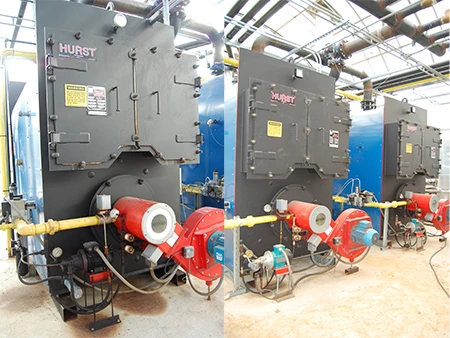
Kube-Pak, one of the largest plug producers in the United States, grows its crops in roughly 20-acres of greenhouse space. Located in Allentown, New Jersey, the facility uses 22 boilers to heat its undercover production.
According to Rutgers University, the average temperature in New Jersey drops below 42 degrees from November through March, and hovers around the 50s in April. So, keeping Kube-Pak warm during the chilly winter months can be challenging. Bill Swanekamp, one of Kube-Pak’s co-owners, says the company divides its 20 acres into 11 sections of 65,000 square feet. Then they use two boilers to heat each section.
“The idea is that we want the kind of modular control where we can open and close sections based on whether or not there are plants present. That’s where the efficiency comes in,” Swanekamp says. “Although it is more expensive, initially, to put in a system like this, the long-term savings are dramatic.”
Swanekamp says that the boilers are tied into Kube-Pak’s environmental control system and run on an as-needed basis. He says that of the facility’s 22 boilers, 17 are Hurst Boiler systems and Kube-Pak is planning on converting its remaining five systems to Hurst.
Swanekamp says the Hurst system also allows the company to match the boiler to any burner system on the market and Kube-Pak has found a burner that allows them to run Hurst systems at 86 to 88 percent efficiency.
“The Hurst systems are built in such a way that they can handle our needs,” he says. “The ratio of the number of linear feet of firetube, in relation to the horsepower, is something we like. Hurst boilers have many feet of bypass for the heat to go from the burning part of the exchange to the firewall into the water itself.”
He adds that the Hurst systems are larger than many of their peers. The boilers are built with more steel, creating a physically larger system, and allowing for more heat exchange space, making a more efficient system. The added steel also improves the system longevity, Swanekamp says.
“We’re a major plug producer. The thing about plugs it that you really need hot water to grow them and the Hurst system works very well in meeting our needs,” he says.
Latest from Greenhouse Management
- Anthura acquires Bromelia assets from Corn. Bak in Netherlands
- Top 10 stories for National Poinsettia Day
- Langendoen Mechanical hosts open house to showcase new greenhouse build
- Conor Foy joins EHR's national sales team
- Pantone announces its 2026 Color of the Year
- Syngenta granted federal registration for Trefinti nematicide/fungicide in ornamental market
- A legacy of influence
- HILA 2025 video highlights: John Gaydos of Proven Winners





